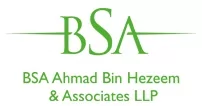Real estate funds ("REF") and real estate investment trusts ("REIT") are currently a topic on everyone's agenda given the introduction of new regulations aiming to attract more foreign capital to the industry as part of the Government's plan to strengthen the United Arab Emirates position as a global destination for real estate investments.
This article provides a summary of the set up of REFs / REITs in the ADGM (the "Fund(s)").
1. Applicable ADGM rules and regulations
The ADGM rules and regulations applicable to the Funds are as follows:
- Financial Services and Markets Regulations 2015 (the "FSMR").
- Fund Rules VER06.250521 (the "Fund Rules").
- Conduct of Business Rules VER11.080222 (the "COBS").
- Real Property Regulations 2015 (the "RPR 2015").
These rules and regulations are collectively referred to as the "Applicable Regulations".
2. The Funds
2.1. A REF, referred to in the Regulations as a "Property Fund", is defined as a fund dedicated to investment in "Real Property" (as defined in the RPR 2015) (the "RP") and in securities issued by corporate entities whose main activities are to invest in, deal in, develop or redevelop Real Property. Funds can use investment companies, limited investment partnerships, investment trusts or protected cell companies / incorporated cell companies as the fund vehicle.
ADGM has entered into agreements with the local authorities in Abu Dhabi and in Dubai to broaden the properties which can be acquired by the Funds. In principle, Funds are now allowed to purchase RPs in Abu Dhabi without any restriction, and in the areas designated for foreign ownership in Dubai.
A REIT is also a Property Fund (i) whose purposes are to invest in income-generating Real Property, (ii) which distributes at least 80% of its audited annual net income to its unitholders, (iii) whose borrowings shall not exceed 70% of their net asset value; and (iv) whose investments shall not exceed 30% of their total property assets.
REITs are close-end funds and may only use an investment company or an investment trust as a fund vehicle.
Apart from the obligation to distribute 80% of its audited annual net income to its unit holders, which only applies to REITs, both Property Funds and REITs operate as follows:
- The manager sets up and manages the Fund.
- The Fund acquires the RPs which are registered in the name of either the custodian or the trustee.
- The manager deducts its management fees from the Income.
- The manager may delegate the property management functions to a property manager.
The Funds are either domestic funds, i.e., funds which are domiciled in the ADGM, or foreign funds, which are funds domiciled outside the ADGM.
Domestic funds are split into public funds ("PF"), exempt funds ("EF") and qualified investor fund ("QIF").
- PFs are funds whose units can be offered by way of a public offer or to unitholders including retail clients.
- EFs are funds:
- whose units are offered only by way of a private placement,
- whose unitholders are classified as "professional clients" as per the COBS,
- where the initial subscription to be paid by an investor is at least equivalent to US$ 50,000, and
- which are not a QIF.
- QIFs are funds similar to the EFs with the exception of the initial subscription to be paid by an investor, which is equivalent to at least US$ 500,000.
Further classifications into "Specialist Funds" are defined in the Fund Rules.
2.2. The set-up of a Fund is initiated by the Fund manager (the "Manager"). The Manager can be an ADGM-based fund manager, or a foreign manager based in a jurisdiction recognised by ADGM as eligible, i.e., whose rules and regulations are similar to ADGM's rules and regulations. A list of the "recognised jurisdictions" is set out in the Appendix 8 of the Fund Rules.
Prior to setting-up a Fund, an analysis of a series of relevant issues should be made, e.g., the approvals which may be needed depending on the location of the RPs and the identity of the RP's seller which may involve several governmental authorities having each specific rules and procedures.
The corporate structure of the funds should be decided on the grounds of the Fund's sponsors'/managers' objectives, e.g., the management structure, the required capitalisation, the characteristics of the offering including compliance with Shari'a principles, the special purpose vehicles which will be constituted/used, the tax optimisation strategy and the like.
The acquisition method of the RPs should be carefully analysed on the basis of the current context of the real estate market. Arrangements among the sponsors, managers and sellers of the RPs should be tailored in an optimal way which meets the objectives of each of the concerned parties. In this respect, a combination of payment methods may be considered allowing the seller of an RP to hold units in the Fund, in addition to receiving a cash consideration in return for selling the RP to the Fund. This will, on another hand, allow the Fund/Manager to disburse less cash when acquiring the RP and efficiently monitor its cash flow.
The transfer fees due when selling an RP should also be considered in order to make the transaction as efficient as possible from a land transfer fees perspective.
3. The Manager
The Manager of an ADGM fund has to be either a local Manager licensed by ADGM, or a foreign Manager regulated in a foreign jurisdiction/market included in the recognised Financial Services Regulatory Authority's (the "FSRA") recognised jurisdictions list.
3.1. In order to carry out the activity of an ADGM-based fund Manager, an applicant has to be licensed by the FSRA, the financial regulator within ADGM. The first step is to meet with FSRA to discuss the applicant's intentions. In preparation of the meeting, the applicant will need to have a detailed presentation setting out the planned (i) regulated activities, (ii) internal controls and (iii) methods to address the related risks.
Granting of a license is subject to a risk-based assessment carried out by FSRA. The application process for Managers begins with filling in the relevant forms, including the general information for regulated activities form ("GIRA") which includes a business plan.
The FSRA's requirements may vary depending on whether the Fund is a PF, EF or a QIF. The most rigorous approach applies to Managers who will deal with retail clients.
FSRA identifies three broad types of Managers when undertaking the authorisation process which are:
- Start-up Manager, i.e., a manager who (i) has less than thirty clients who are all professional clients, and (ii) is managing net assets which worth less than US$ 250 million.
- Restricted Manager, i.e., a manager whose clients are all professionals, without any limitation as to (i) the number of clients, or (ii) the net assets under management.
- Retail Manager, i.e., a manager whose clients can include retail and professional clients without any limitation as to (i) the number of clients, or (ii) the net assets under management.
An ADGM-based Manager may establish and manage funds in another jurisdiction subject to the regulatory requirements of the host jurisdiction.
The ADGM imposes a base capital requirement for the Manager which varies depending on the type of Fund.
Apart from the capital requirement, the fees for securing the appropriate licence include:
- Authorisation fees in the amount of US$ 5,000 for each regulated activity.
- An annual supervision fee in the amount US$ 5,000.
3.2. To be eligible to manage a Fund, a foreign Manager shall be registered with a jurisdiction acceptable to FSRA. A foreign Manager can manage Funds without being licensed by the FSRA provided that the foreign Manager:
- is a corporate body;
- manages the domestic fund from a jurisdiction which is either included in the FSRA's recognised jurisdiction list, or assessed by the FSRA as capable of providing an adequate threshold of regulation;
- willingly subjects itself to ADGM's laws and courts in respect of its activities relating to the domestic fund;
- appoints an FSRA licensed fund administrator or trustee who will act as the local agent of the foreign Manager to deal with the FSRA in respect of all regulatory processes and to handle some investor related functions (e.g., to maintain the unitholders' register, to make the fund's prospectus available to investors and the like); and
- appoints a custodian.
A foreign Manager shall notify the FSRA of its intention to carry out Fund management activities in ADGM. For these purposes, the foreign Manager shall inform FSRA of the proposed fund's purposes and investment policy. The foreign Manager shall also commit to meet the FSRA's requirements in order to be authorised to carry out its activities in the ADGM.
Foreign Managers shall only pay a notification fee in the amount of US$ 5,000.
4. Funds' registration
The Fund Rules and FSMR require PFs to be registered with FSRA.
An application for registration of a PF shall be made by the Manager, or by the Manager jointly with the trustee, if the Fund is an investment trust.
For these purposes, the FSRA requires the Manager to provide a series of documents including copies of the Fund's constitutional documents and prospectus, and a certification by the Manager that the constitutional documents and the prospectus comply with the Fund Rules and FSMR.
FSRA may make enquiries or require additional information at any time during the assessment process.
The registration of a PF is subject to the following:
- finalisation of the incorporation steps;
- appointment of a fund manager;
- appointment of a trustee if the Fund is an investment trust (i.e., a REIT);
- appointment of a custodian; and
- appointment of an auditor.
EFs and QIFs do not need to be registered with FSRA. The Manager of an EF or a QIF only needs to notify FSRA, at least 14 days prior to the initial offer of the units. In the case of a close-ended EF or QIF, any subsequent offer to issue units shall be notified to FSRA, at least 14 days prior to the offer.
The notification to the FSRA is based on a standard form, requesting various details about the Fund, including the name and type of the fund.
5. Costs and fees
Public Funds:
- Registration fee: US$ 3,000
- Sub-fund registration: US$ 1,000
- Annual fee: US$ 3,000
- Sub-fund annual fee: US$ 1,000
- Prospectus amendment fee: US$ 3,000
Exempt Funds and QIFs:
- Registration fee: nil
- Sub-fund registration: nil
- Annual fee: US$ 2,000
- Sub-fund annual fee: US$ 1,000
Foreign Funds:
- Notification Fee: US$ 1,000
6. Exit strategy
The prospectus of a Fund sets out the Fund's policies and procedures in relation to the exit strategies available to unitholders, including the redemption of the units by the Fund.
For PFs, the Fund Rules provide for mandatory provisions to be included in the PF's prospectus, including the following:
- the restrictions on the investors' right to redeem;
- the steps to be taken by a unitholder when the units are being redeemed;
- the redemption price of the units;
- the circumstances leading to a mandatory redemption;
- the circumstances leading to a suspension of the redemption;
- the minimum number or value of the units which may be redeemed in a single transaction;
- the time for sending redemption requests; and
- the redemption charges.
The redemption in respect of EFs and QIFs shall be dealt with in the prospectus, as no specific requirements are set out in the Fund Rules.
The remaining details concerning the redemption (e.g., payment of the redemption price to the unitholder) shall be detailed in the prospectus.
7. Accounting, audit and reporting
The Manager shall prepare financial statements in accordance with the IFRS or the US GAAP for each financial year of the Fund, and keep accounting records which comply with the legislation applicable in ADGM. These documents shall comply with the Fund Rules.
The Fund Manager shall further appoint an auditor to the Fund and inform FSRA of this appointment. The auditor's reporting shall comply with the requirements as set out in the Fund Rules.
Conclusion
ADGM regulations in respect of the Funds are similar to the rules and principles governing funds in regulated Anglo-Saxon markets. Trusts can therefore be constituted in ADGM and optimise the investors' protection through the segregation of the involved assets.
In addition, specific classes of funds are provided for in the Fund Rules and can be used to strengthen the unitholders' protection. A combination of different tools and concepts available in the Fund Rules may be considered on a case-by-case basis depending on the objectives sought.
Construing the current version of the laws and regulations governing the mainland and fee zone funds in the UAE lead to the conclusion that foreign real estate funds are not yet able to acquire real estate properties in the UAE.
Therefore, the decision to set up a local or foreign real estate fund mainly depends on the location of the real estate properties to be acquired by the fund.
The time needed to finalise the set up of a Fund depends on the applicant's profile and track record, the complexity of the selected fund structure, the availability of the documents required by FSRA, the clarification which may be requested and the compliance of the provided documents (including the prospectus) with the Fund Rules.
Footnote
1 Real Property is defined as: (i) lands, buildings, and items situated on or under the soil with the intention to keep them in place permanently or indefinitely, and (ii) any interest therein.
The content of this article is intended to provide a general guide to the subject matter. Specialist advice should be sought about your specific circumstances.


